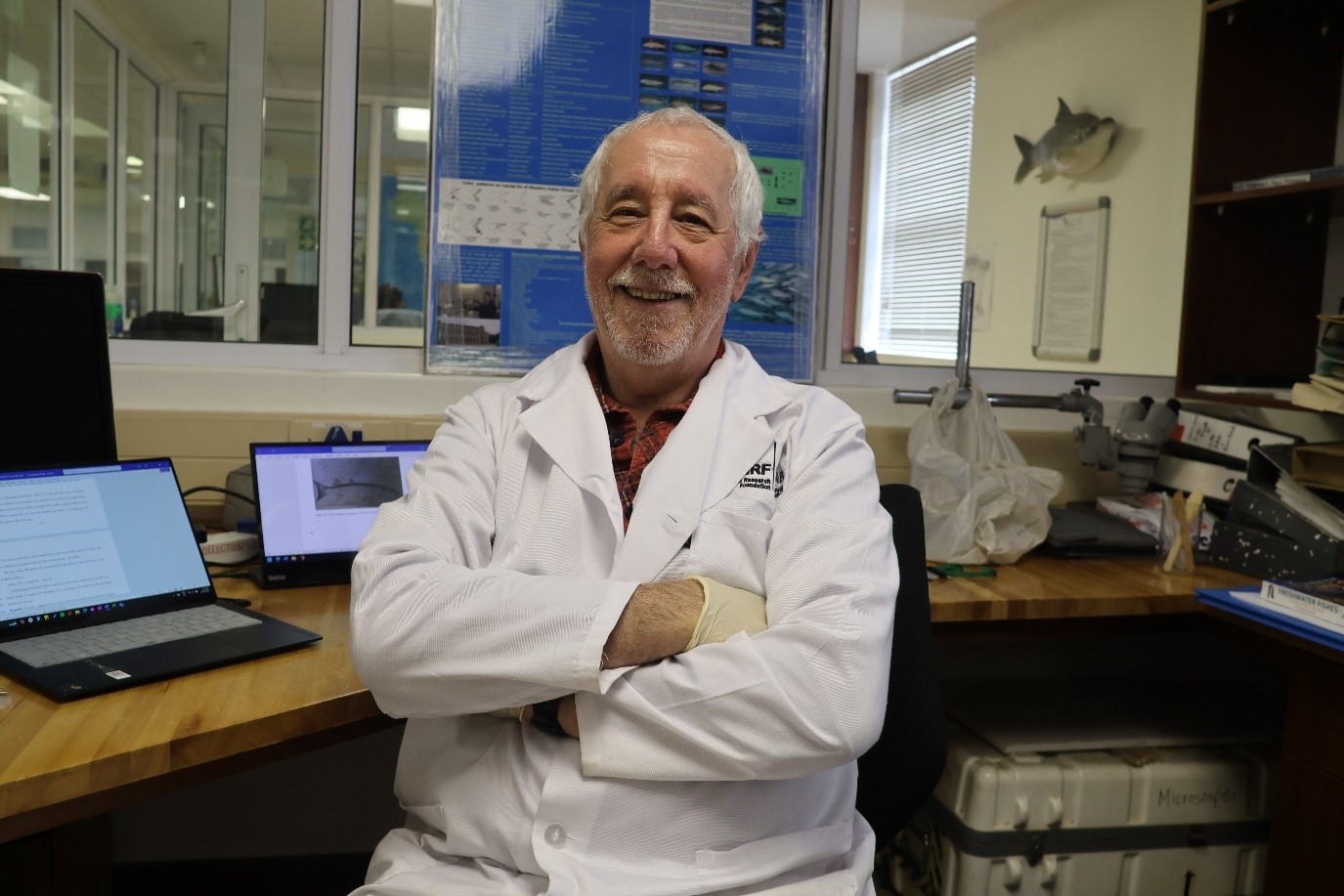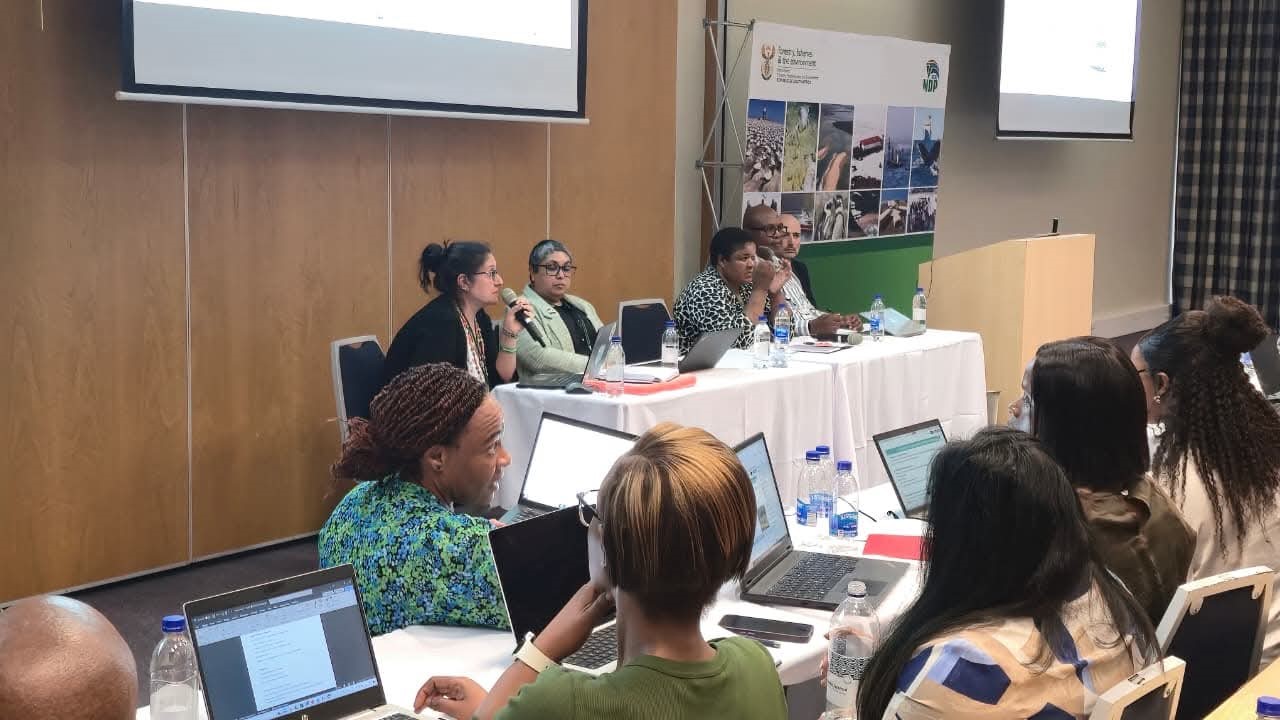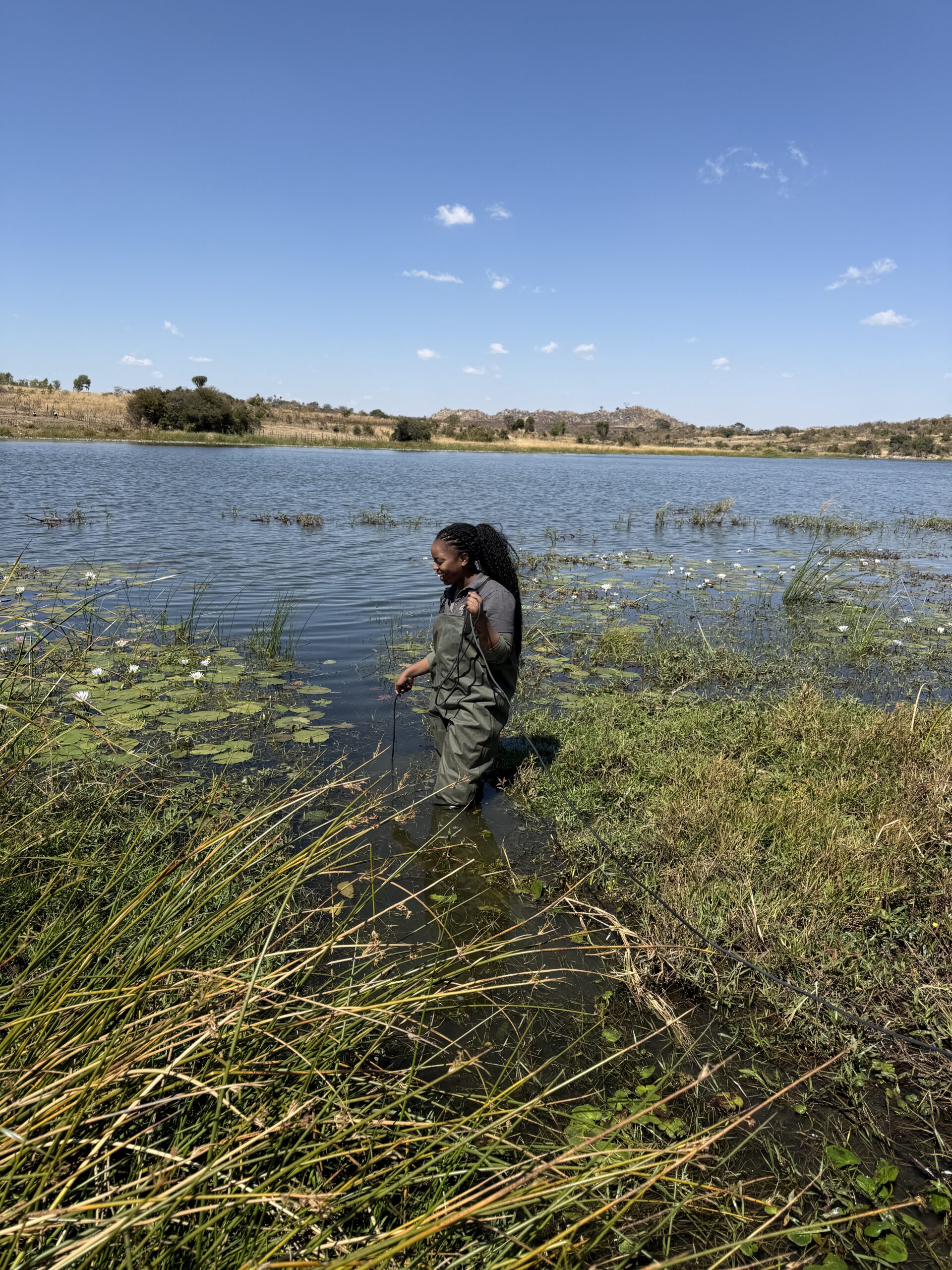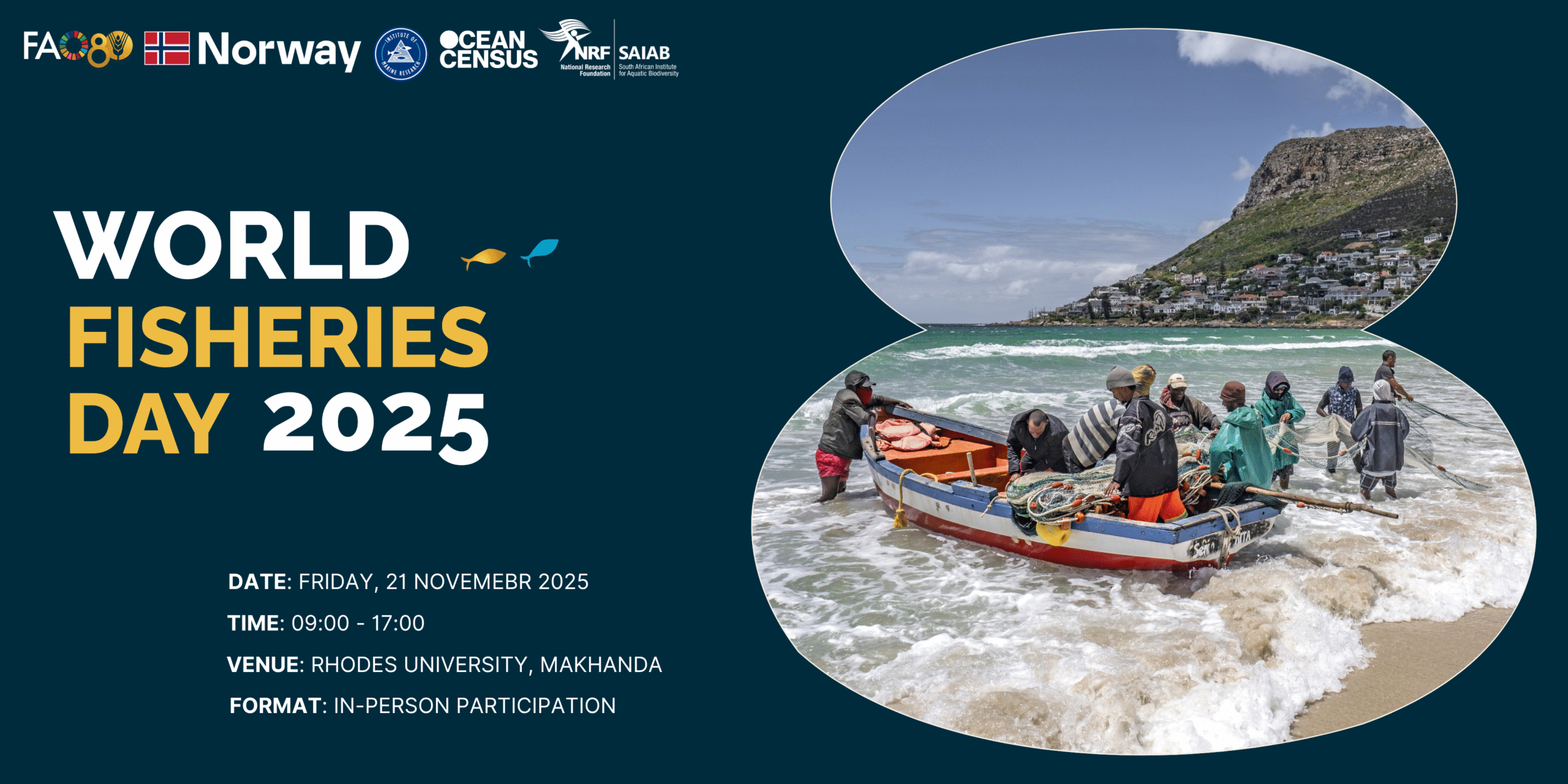NRF-SAIAB recently welcomed Dr. Barry Russell, a distinguished ichthyologist with over five decades of experience, for a five-week research visit. Dr. Russell, who is based at the Northern Territory Museum in Australia as Curator Emeritus of Fish, has dedicated his life to studying marine fish, focusing on taxonomy, ecology, and historical ichthyology. His visit, which concluded on March 14, was an opportunity to collaborate with local researchers, analyse unique fish specimens, and contribute to ongoing studies on Western Indian Ocean fish species.
A Lifelong Passion for Ichthyology
Dr. Russell’s fascination with marine life began at an early age, inspired by his love of tropical fish. “Ever since I was a little boy, I was always interested in keeping tropical fish, and that’s what got me started”, he recalled. His academic journey took him from the University of Auckland, New Zealand, where he studied rocky reef fish ecology, to Macquarie University in Sydney, Australia, where he earned his PhD on the taxonomy of temperate labrid fishes. Over the years, he has worked in prestigious institutions, including the Australian Museum and the Smithsonian Institution, before settling at the Northern Territory Museum, where he eventually became Deputy Director.
While he initially studied marine ecology, Dr. Russell was drawn to taxonomy after working alongside experienced taxonomists in Australia. “I was very much influenced by my peers, and I decided to become a taxonomist myself” he explained. His research has since led him to study various fish families, including threadfin breams (Nemipteridae) and lizardfishes (Synodontidae), the primary focus of his recent work at NRF-SAIAB.
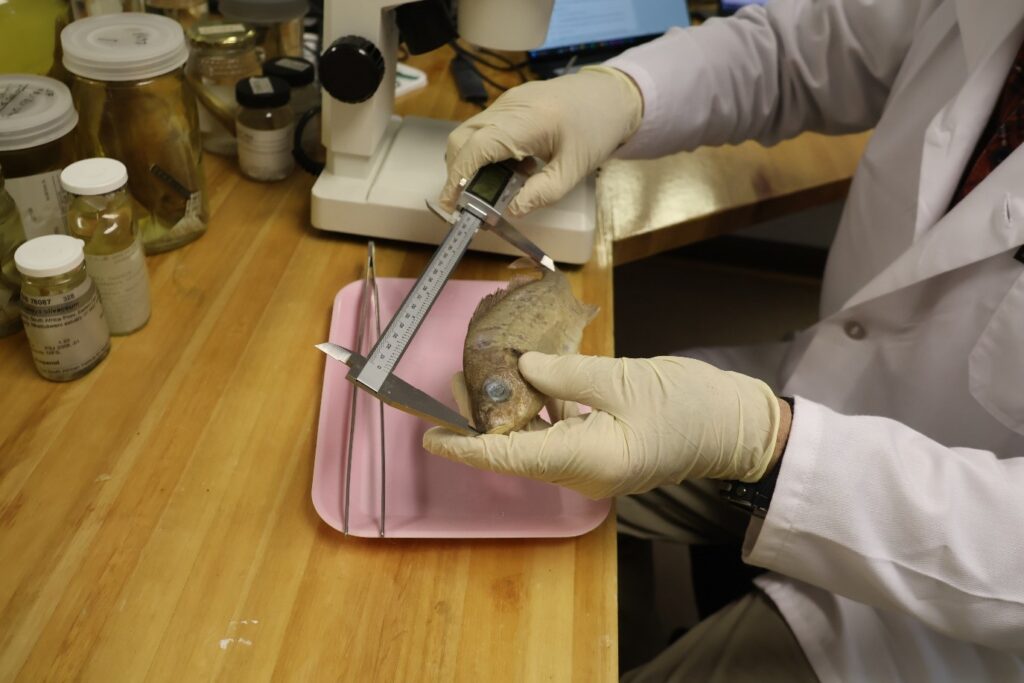
Dr. Russell working on some of the specimens in the National Collections Facility.
During his time at NRF-SAIAB, Dr. Russell examined fish specimens collected during the Nansen research cruises to Tanzania and Mozambique (2022–2024). These expeditions, part of an international effort to study marine biodiversity, yielded specimens that are helping researchers refine species classifications and describe previously unidentified fish.
Dr. Russell’s meticulous work in the Collections Facility confirmed the identification of three new species of lizardfish, a significant discovery that could reshape our understanding of the species’ distribution. “These specimens probably extend to at least the KwaZulu-Natal region and possibly as far south as Algoa Bay”, he said. The findings will be documented in upcoming scientific publications, adding valuable knowledge to marine taxonomy.
Revisiting the Work of Francis de Castelnau
In addition to his research on newly collected specimens, Dr. Russell is also working on a historical ichthyology project related to the work of Francis de Castelnau, a 19th-century French naturalist, explorer and diplomat. Castelnau documented more than 150 of South Africa’s marine and freshwater fish species in an 1861 monograph, but his work remained unclear due to the lack of illustrations and unknown whereabouts of many of the specimens he described.
An accidental discovery in 2004 changed that: “When I first discovered the existence of Castelnau’s specimens and paintings in a small university museum in Liège, Belgium, it was like finding treasure for me,” Dr. Russell recounted. The collection included beautifully detailed fish illustrations from South Africa, painted by Castelnau himself during his diplomatic posting in Cape Town. Additional paintings later surfaced in Melbourne, Australia, where Castelnau later was posted.
This discovery led Dr. Russell to work with eminent South African Ichthyologist and former NRF-SAIAB Director, Dr. Paul Skelton to review all of Castelnau’s South African fish descriptions. “Until recently, these fish species were largely unknown, but now we’re piecing together the historical records and comparing them with modern specimens,” he explained. Their research aims to clarify the scientific names of these species and their significance to present day knowledge of South African fishes.
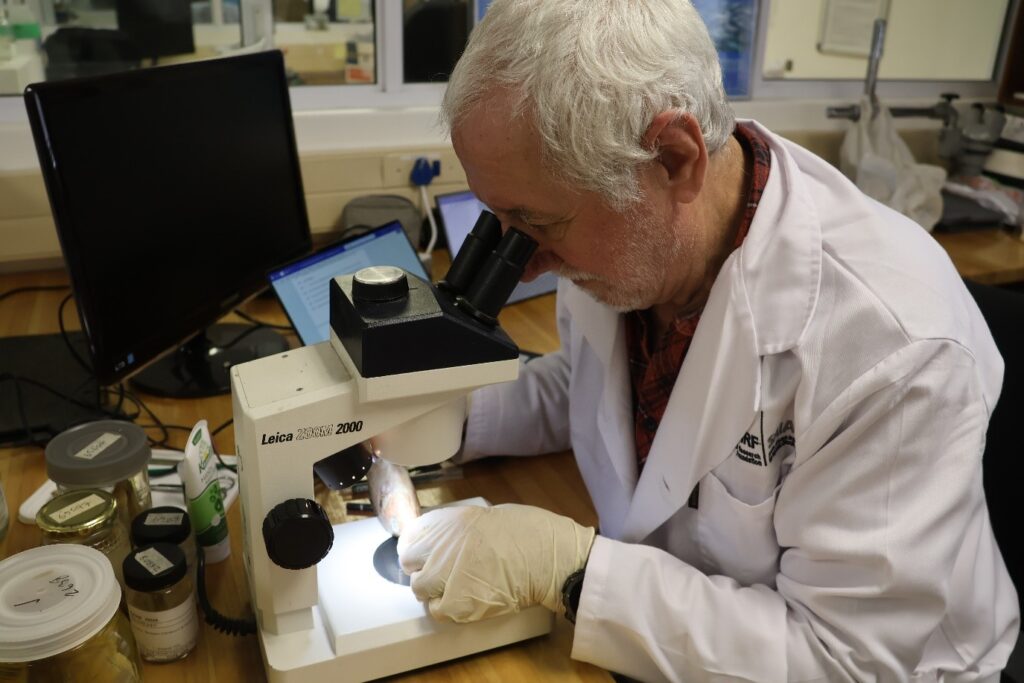
Dr. Russell studying fish specimens through a microscope.
A Productive Stay at NRF-SAIAB
Dr. Russell’s experience at NRF-SAIAB was marked by productive research and valuable collaborations. He praised the institution’s collection, which provided him with the necessary specimens and data for his work. “NRF-SAIAB has a very good collection. It is well organised, and I feel very well supported by the collections staff,” he noted. His work involved examining alcohol-preserved specimens, taking precise measurements, and compiling extensive data to support species descriptions.
While he acknowledged the challenge of working through the large number of specimens in the Collections Facility, he was able to integrate data from previous visits to NRF-SAIAB with newly available material. His research at the institute will contribute to upcoming publications on both modern and historical ichthyology.
Looking Ahead: Future Collaborations and Advice for Younger Researchers
As his visit drew to a close, Dr. Russell expressed his enthusiasm for continuing his work with NRF-SAIAB in the future. “I find myself more and more working on Western Indian Ocean species, and there are a lot of new discoveries still to be made”, he said. The wealth of biodiversity in the region, coupled with ongoing research efforts, presents opportunities for further taxonomic studies and collaborations, particularly for students.
For young researchers interested in fish taxonomy, Dr. Russell emphasised the importance of studying type specimens—the original specimens used to describe new species. “Read as much as possible from older taxonomic works, and if you can, travel to institutions in London, Paris, the Netherlands, and Germany. Many type specimens are in these European museums, and it’s important to examine them first-hand”, he advised.
Dr. Russell’s visit to NRF-SAIAB was a testament to the value of international research collaborations and the enduring pursuit of scientific discovery. His work not only advances marine taxonomy but also bridges historical and modern ichthyology, ensuring that past knowledge continues to inform present and future research. As we bid him farewell, we look forward to seeing the impact of his findings and the potential for future partnerships.
